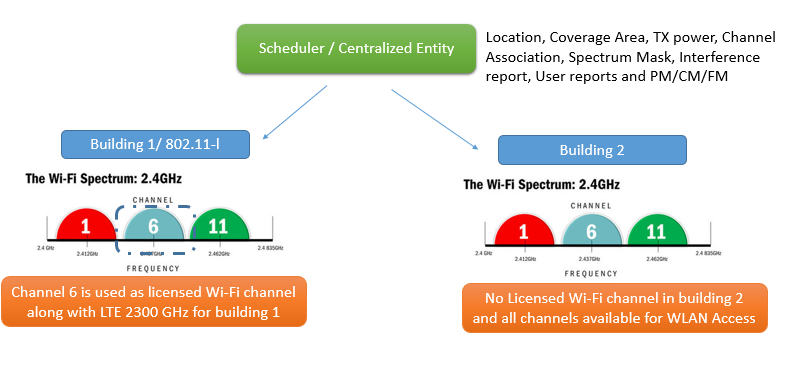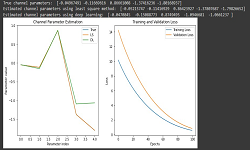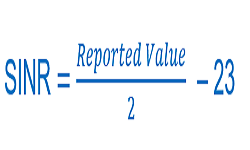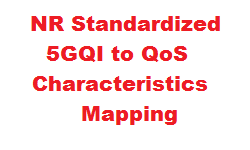Licensed Wi-Fi 802.11(l) : Architecture and Role in 5G
Spectrum these days is the most important parameter for any Radio Network operator to compete, survive and provide better customer experience. More so, with availability of Gigabit access layer and huge data demand. Network operators are in need of more spectrum to share the load and provide the QOS to the customers. Many solutions such as Capacity management, layer management, SON for Traffic steering to different RAT has either become saturated or are not able to provide desired results especially in Dense Urban.
Crossing the borders: Licensed Technologies in Un-Licensed Band
Operators/ Technology vendors have come up with many popular solutions such as:
Using Wi-Fi as secondary technology to offload users/traffic, hence to save high capex spending on spectrum. Wi-Fi is a very popular RAT, already deployed massively all around the globe with Telco’s deploying more Wi-Fi in Dense urban area for offloading, more access points ( planned+ unplanned) started experiencing interference issues with saturation on lower frequency i.e. 2.4GHz and same story seems to continue for 5GHz band.
Vendors also tried/ are trying to push-in , a refined form of LTE called LTE- U/LAA and Multefire which operates in ISM/ Unlicensed band as secondary carrier to licensed spectrum offering interference mitigation and better scheduling advantages, which obviously made deal more advantageous for telecom operators.
LTE-U/LAA: https://www.qualcomm.com/invention/technologies/lte/laa
Multefire : https://www.multefire.org/ https://www.qualcomm.com/invention/technologies/lte/multefire
Wi-Fi Licensed : 802.11 l
Wi-Fi being a neutral technology wasn’t designed to deal with such strong interference in the unlicensed spectrum and hence would struggle. But with 802.11ax everything changes. Wi-Fi now offers and have better interference mitigation, better scheduler and much more. While discussing in public forums we came across an idea:
“If Cellular can have unlicensed version of RAT as LTE-U/Multefire, Then why not Wi-Fi can have a licensed flavor may be WiFi- Licensed / 802.11 l “
Coincidence: 802.11 l is not used as name to any WLAN standard.
Having worked for /with/ in both domains and RATs, I won’t deny the fact that Wi-Fi still cannot match cellular in terms of Mobility, QOE and Service level. But the whole dynamics changes when we talk about a closed environment let’s say Indoors/ Enterprise or a private network.
Similar to LTE-P, which is form of restricted/ refined deployment of LTE for limited for an enterprise similar to closed group. What if we can air mark, one/few channels in each frequency band of Wi-Fi for only Wi-Fi Private, Wi-Fi enterprise or Wi-Fi Licensed? For example: 20MHz channel which can be managed by Central Independent Management entity such as CBRS or new alliance, would regulate channels, spectrum usage, transmit powers and Geo location etc.
As shown in diagram above, three building deployed with Wi-Fi on 2.4 GHz, the centralized node have a location, statistics, and reports from each building.The node will make sure all access points Transmitting on each access point do not interfere with each other by Managing TX and coverage footprint
The licensed channel can be statically or dynamically defined. The central entity based on business model can push configuration and define role of each channel.
Why Wi-Fi Licensed is as important for Telcos
Wi-Fi is in every device, be it a phone with simcard or only Wi-Fi enabled iPAD. Wi-Fi comes with ad-on advantage of ease of design, deploy and managed. Not getting into financial model of Licensed Wi-Fi (Wi-Fi-L) but advantages are Better/enhanced QOS/QOE, No Interference and guaranteed service quality along with Ease of Wi-Fi network.
Hence, what it also gives is Fast-track offloading solution. Rather than waiting for ecosystem to develop around LTE-U/LAA and Multefire, Wi-Fi/ 802.11 l can be deployed much faster, easier and can benefit telcos more.
Wi-Fi will not be secondary, but a parallel technology in future networks i.e. 5G
Why this is the right time for this:
802.11ax is coming, there is a lot which this refined Wi-Fi will bring on in terms of enhanced features and QOS/QOE. 6GHz is already being proposed for Wi-Fi technology, Wi-Fi-l can also be be inherited in this new standard. Trying to collect and research more information.
Thoughts?
More on 802.11ax and 802.11ax in 6GHz






